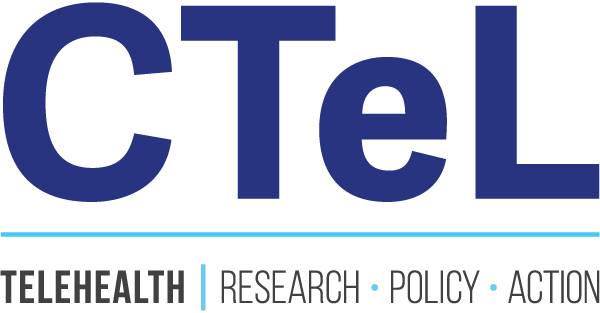Revolutionizing Nursing Education: Nightingale College Pioneers VR for Superior Outcomes and Cost Savings
Nightingale College, a leader in innovative nursing education, is at the forefront of transforming how future nurses are trained. A growing body of evidence, complemented by Nightingale College's own impactful initiatives, strongly indicates that virtual reality (VR) headsets are poised to deliver better academic scores for nursing students at significantly lower costs, marking a pivotal shift in healthcare education.
The integration of VR in nursing programs is not just a technological advancement; it's a strategic solution addressing critical challenges in the nursing field, including the ongoing national nursing shortage. The U.S. Bureau of Labor Statistics projects over 194,000 openings for registered nurses annually through 2033 (Purdue Global, n.d.). VR offers an impactful way to streamline education and enhance training efficiency, ultimately increasing workforce readiness by providing immersive clinical experiences without relying solely on limited real-world placements.
The Power of Virtual Reality in Nursing Education
VR simulations allow students to practice complex clinical skills in a controlled, risk-free environment, crucial for high-stakes patient care scenarios. Studies have shown that immersive VR training can be as effective as, and in some cases even superior to, traditional inpatient clinical training. For instance, research indicates that nursing students undergoing immersive VR training can demonstrate better overall performance in various domains, including infection control, initial assessment, and oxygen therapy, compared to their counterparts in traditional settings (Cieslowski et al., 2023).
Beyond skill development, VR effectively improves knowledge acquisition in nursing education. A meta-analysis of 12 studies found that VR was more effective than control conditions in enhancing knowledge among nursing students (Wang et al., 2020). The ability to repeatedly engage with realistic scenarios allows students to develop competencies and confidence more quickly, potentially reducing the time needed in traditional clinical settings.
Key Findings from the 2020-2025 Research
Academic Performance
Nursing students who use VR consistently score 5.9% higher on assignments (2025 Findings).
Students using 3D headsets score marginally higher on assignments in fewer attempts and less time (2025).
Learner scores rose significantly on final exams after using VR Learner scores rose 171 points, (2023 research).
Cost-effectiveness
VR education takes 22% less time than traditional physical simulation, making it 40% less expensive (2023).
VR doesn’t require training facilities and faculty (2022 and 2023 research), eliminating geographic barriers for rural students with limited clinical access.
Industry Impact:
The findings come as:Sixty percent of nursing schools turn away applicants due to clinical placement shortages. Nearly 700,000 applications are turned away each year (AACN 2024).
A panel of experts reviewed research by the National Council of State Boards of Nursing (NCSBN) and found substantial evidence that up to 50% simulation can be effectively substituted for traditional clinical experience in nursing education.
States such as Texas and Florida update accreditation rules to include VR training hours; however, some states are limiting the use of VR simulation to meet licensing requirements.
Cost-Effectiveness and Accessibility: A Game Changer
One of the most compelling advantages of VR in education is its cost-effectiveness, especially in the long run. While initial investments in VR technology are required, the scalability of these platforms leads to significant savings. Once a VR simulation is developed, it can be reused indefinitely for numerous trainees without additional per-participant expense, unlike live simulations which incur recurring costs (UbiSim, n.d.). This eliminates resource bottlenecks such as the need for expensive mannequins, medical tools, and physical space rentals. Some analyses suggest that VR training can be 22 times cheaper than manikin-based simulation (Oxford Medical Simulation, n.d.). Furthermore, VR training can be 3-4 times faster than traditional sessions, allowing for more efficient use of resources and quicker competency development (Virtual Medical Coaching, n.d.).
Nightingale College exemplifies this commitment to accessibility and innovation. With a hybrid learning model that combines online instruction with virtual simulations and labs, the college empowers learners from diverse backgrounds to pursue high-quality nursing education (Nightingale College, n.d.). This approach is vital in addressing health equity gaps by preparing a relevantly skilled and readily available nursing workforce representative of the communities they serve. In 2023, Nightingale College welcomed over 2,000 new learners and boasts impressive persistence and licensure rates, demonstrating their impact on diversifying the nursing workforce (Nightingale College, 2023 Impact Report).
The Future of Nursing Education is Virtual
The trajectory of nursing education is clear: technology, particularly VR, will continue to play an increasingly central role. As healthcare becomes more technology-driven, nursing programs must equip students with advanced digital literacy skills and an understanding of emerging tools. VR provides a safe and immersive space for students to develop critical thinking, clinical judgment, and decision-making abilities, preparing them for the complexities of modern healthcare.
“VR isn’t just supplemental to education — it’s becoming central to solving nursing shortages”
Nightingale College's pioneering spirit in adopting and researching VR solutions reinforces its position as a leader in preparing the next generation of nurses. By embracing these innovative technologies, Nightingale College is not only enhancing the educational experience but also actively contributing to a stronger, more capable nursing workforce for the future.
References
Cieslowski, B., et al. (2023). Nurses trained via virtual reality performed better than those trained by inpatient clinical training. College of Public Health, George Mason University. https://publichealth.gmu.edu/news/2023-04/nurses-trained-virtual-reality-performed-better-those-trained-inpatient-clinical
Nightingale College. (n.d.). How Hard is Nursing School? The Challenges of Becoming a Nurse and Tips for Graduating. https://nightingale.edu/blog/how-hard-is-nursing-school.html
Nightingale College. (2023). 2023 Impact Report. https://nightingale.edu/_resources/documents/Nightingale%20College%202023%20Impact%20Report-2.pdf
Oxford Medical Simulation. (n.d.). Virtual reality a cost-effective alternative to high-fidelity simulation in low-resource settings. https://bilt.online/wp-content/uploads/2021/08/VIRTUA1.pdf
Purdue Global. (n.d.). The Future of Virtual Reality in Nursing Education. https://www.purdueglobal.edu/blog/nursing/virtual-reality-nursing-education/
UbiSim. (n.d.). VR Healthcare: A Cost-Effective Training Solution. https://www.ubisimvr.com/blog/virtual-reality-healthcare-cost-effective
Virtual Medical Coaching. (n.d.). Does VR training cost less than traditional methods? https://blog.virtualmedicalcoaching.com/en/is-vr-training-more-cost-effective-than-traditional-training-methods
Wang, Y., et al. (2020). Effectiveness of Virtual Reality in Nursing Education: Meta-Analysis. PMC. https://pmc.ncbi.nlm.nih.gov/articles/PMC7525398/

